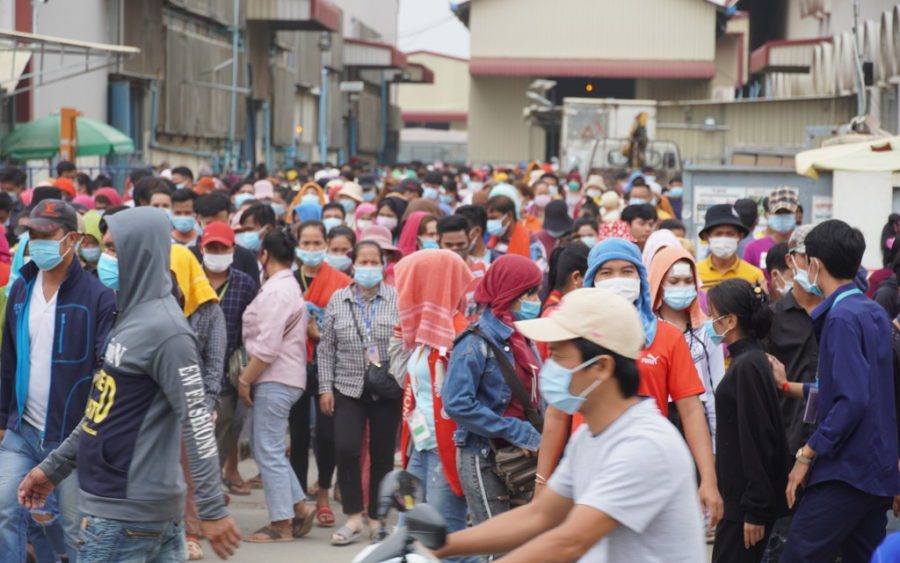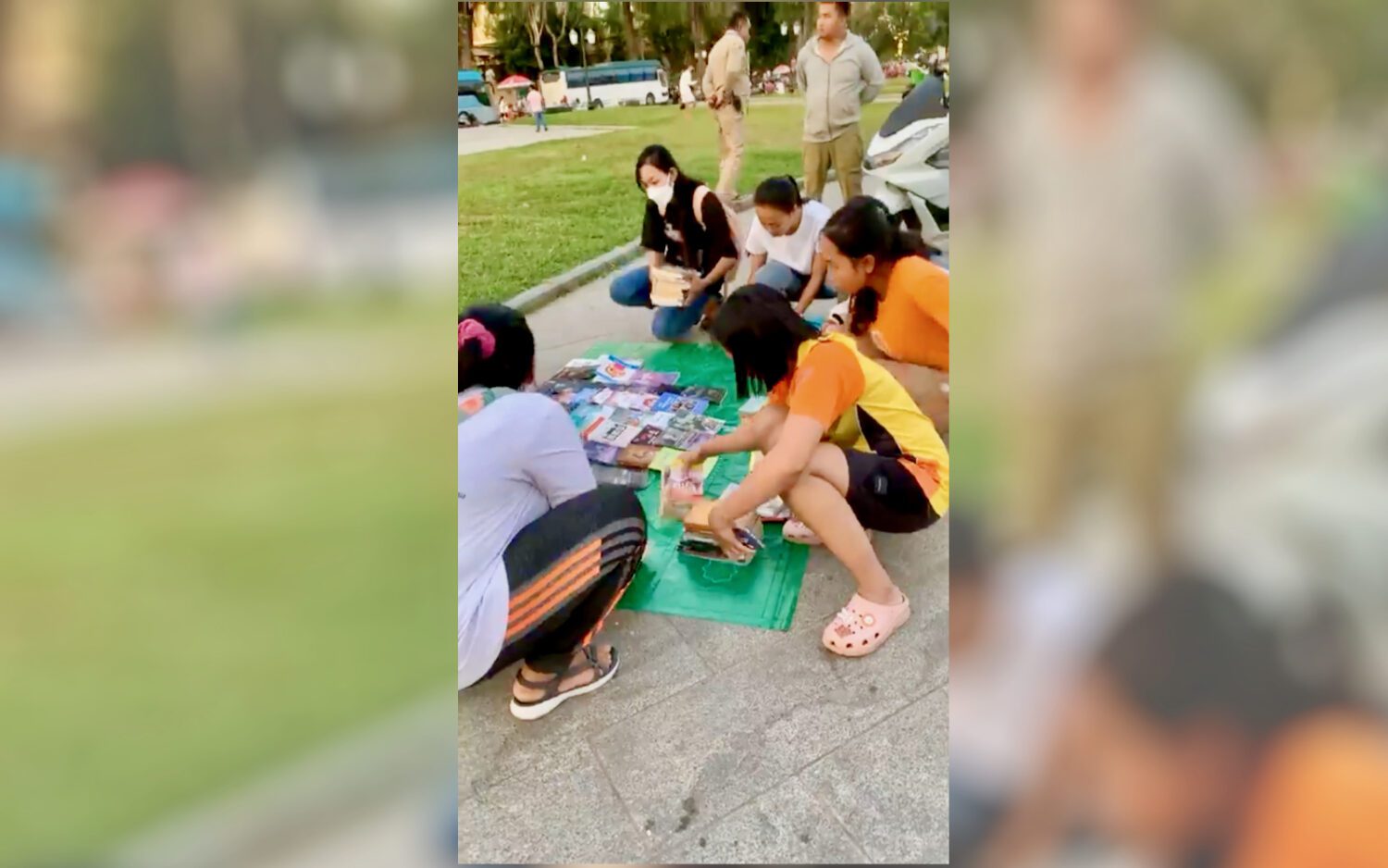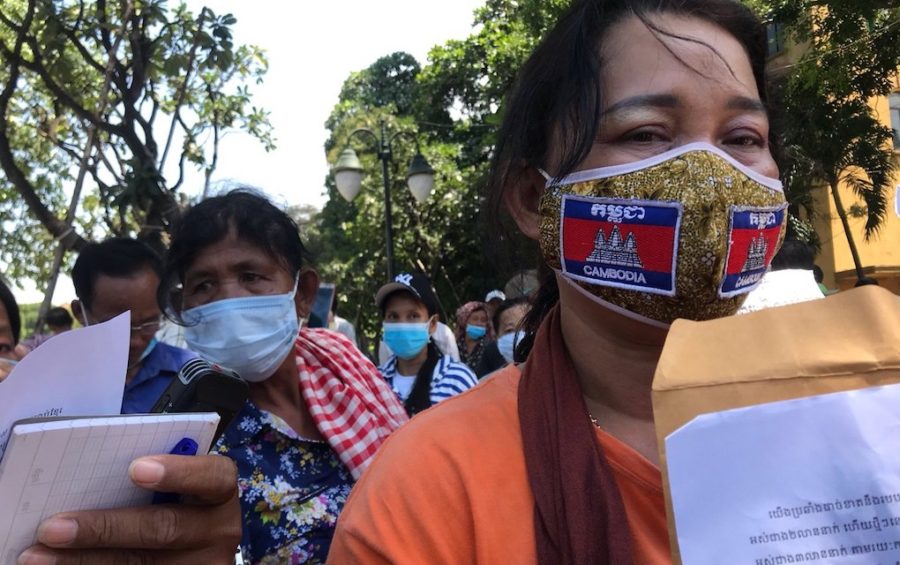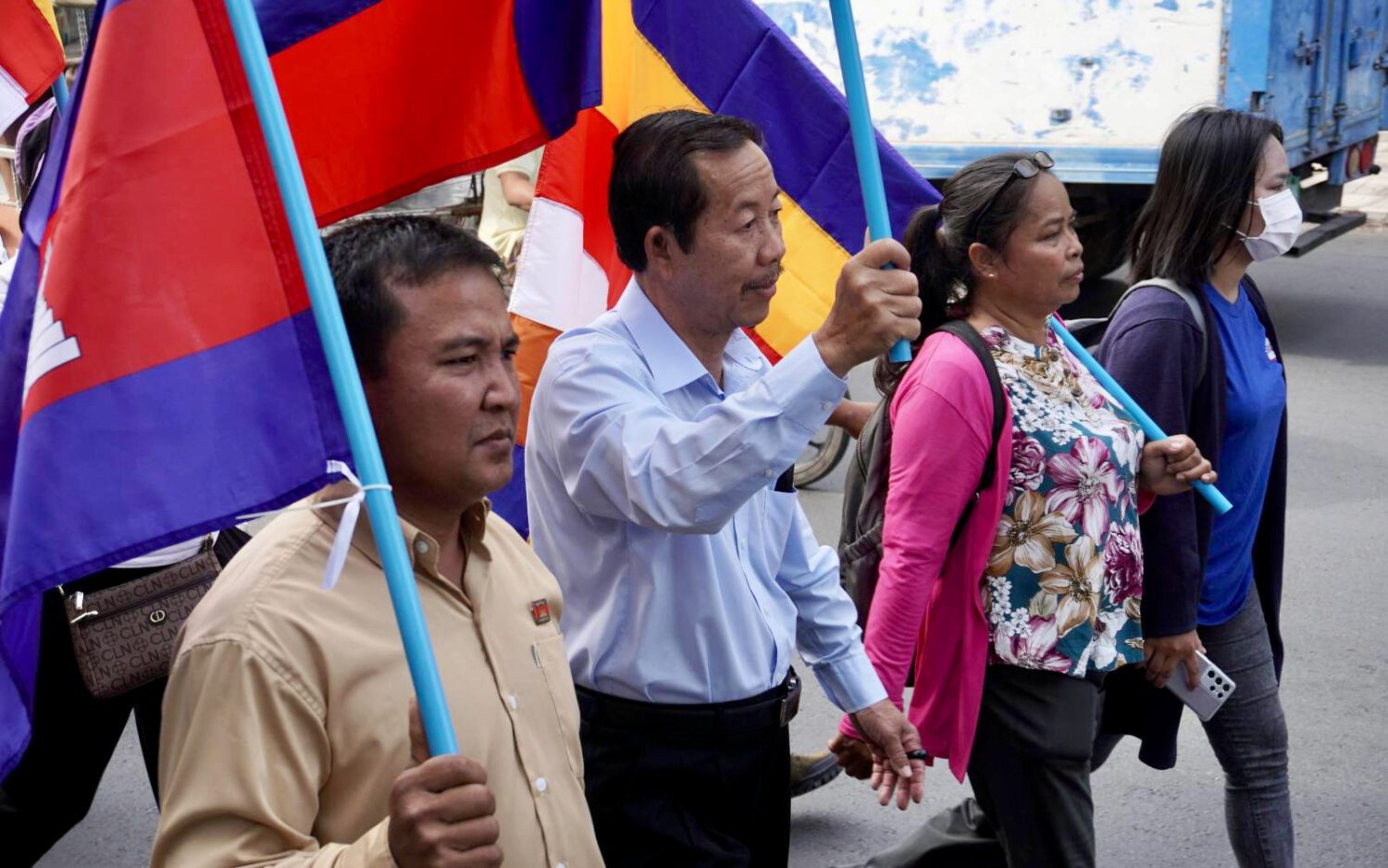Yong Sopheak, like the vast majority of his colleagues at Phnom Penh’s Y&W factory, already received two doses of Sinovac by April 29.
But on June 9, three days after Covid-19 cases began to be found at the babywear factory, the 38-year-old tested positive. He worked at Building B, where more than half of about 300 workers were also found to have Covid-19, he says. Building A also saw a surge of cases, according to workers.
He says he had mild cold-like symptoms at first, but after being taken to the Koh Pich Covid-19 treatment center and given medication, within three or four days he felt fine.
Sopheak, who clips buttons onto garments at Y&W, says he still feels safe despite the infection, and believes the vaccine kept him well.
But an apparent outbreak of hundreds — at a factory where workers say 80 percent were vaccinated — is a reminder that ending the Covid-19 pandemic is not a simple matter, health experts say.
Yan Sina, a 31-year-old packager at Building A, says she tested negative this month. But every team in her building found some positive cases, she says.
“The sewing group, cotton group — every group in the building,” Sina says.
A 32-year-old button clipper, who declined to be named, says she tested positive and is being treated at the Olympic Stadium treatment center. She has no symptoms, she says.
Like others, she says she received two Sinovac doses by the end of April.
“On testing day, I saw almost everyone get taken away” to Covid-19 treatment centers, she says. “I wondered on that day, why I was taken too as I did not feel sick. I wonder a lot.”
The question of the efficacy and significance of vaccinations involves many factors, experts say.
First of all, the incident should not deter people from getting vaccinated, says Sompong Vongpunsawad, a virologist at Thailand’s Chulalongkorn University.
“Although a large proportion of individuals of working age who contract COVID-19 may have mild or no symptoms at all, vaccination further decreases the risk of you getting very ill or transmitting COVID-19 to other people especially those who are older or have underlying medical conditions,” he says.
Every day when workers return home, they risk picking up Covid-19 from the community and bringing infections into the factory — especially by the estimated 20 percent who were not vaccinated, he says.
“None of the COVID-19 vaccines currently approved for use globally were marketed to prevent COVID-19 infection,” he adds. “These vaccines, regardless of the brand, simply help to limit the disease severity or death associated with complications from COVID-19.”
A worker representative, who declined to be named, says first doses at the factory began April 10, and second doses were completed by the end of April.
“All the workers were vaccinated — only those who have health problems and pregnant women have not been vaccinated,” he says.
About 500 workers nevertheless tested positive and were sent to treatment centers, he says.
Factory administrative manager Thy Bunthon could not be reached for this article, but earlier this week disputed the exact number of cases while declining to comment further.
Health Ministry spokesperson Or Vandine could not be reached. The Labor Ministry began its Covid-19 vaccination campaign for factory workers across the country in early April, targeting 200,000 doses per month.
Previously, questions have been raised about Cambodia vaccinating Sinovac at two-week intervals between doses. Two weeks is OK in an emergency context, but 30 days is recommended in routine settings, the World Health Organization has said. One study showed a 70 percent efficacy rate with three weeks between doses, but a separate study recorded just 50 percent efficacy at a 14-day interval.
Richard Coker, emeritus professor of public health for the London School of Hygiene and Tropical Medicine, says it is “a little unusual” to have so many Covid-19 cases when vaccinated, but if people are in close proximity and the virus is present, it can still spread despite vaccinations.
“It isn’t a simple calculation. You often see banded around that if some percentage of a population is vaccinated they’re no longer vulnerable. I don’t think there’s a magic number,” Coker says.
Evidence is showing that Covid-19 vaccines reduce the death rate, hospitalization rate and infection rate, roughly in that order, Coker says: “The mix varies.”
“It’s a little unusual to see such high rates of infection, but I imagine it’s got a lot to do with the environment that people are in,” he says, noting the risks of crowded spaces.
Coker adds caution around the Delta variant, found in Cambodia as of June 4. Experience in the U.K. has shown that it spreads quickly to become the dominant strain, and is “significantly more transmissible” than the U.K. strain previously circulating in Cambodia.
“I think we’re going to be chasing this for a number of years,” where vaccines will need to be quickly modified to immunize against new strains as they emerge, he says.
Coker says the academic community is divided on exactly how much vaccinations will be able to stamp out Covid-19 globally.
“I’m optimistic that we won’t have the death rate [we’ve had] to the same degree, [but] we won’t eradicate the disease,” he says. “I would love to be proven wrong.”













